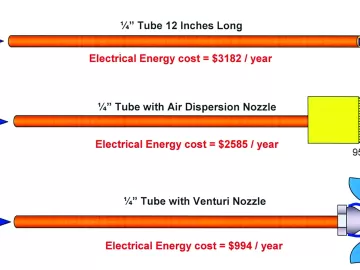Eliminating Pressure Problems in Compressed Air Systems
A couple of key principles must be considered if we want to understand and control the operating costs of your compressed air system. First, compressors pump air, they do not make pressure. The system creates the back pressure which the compressors must pump against. When the compressor delivers more air than the demand requires, the pressure rises and of course, the reverse is also true. Secondly, any component or application which forces the pressure to be higher than necessary creates wasted energy in the system. This waste is not linear to the increase in pressure but can be exponential for many reasons. However, the main contributors are artificial demand and the size of the compressors in the system.


 BC Hydro is a sponsor of Compressed Air Challenge and one of two Canadian utilities represented on the Board of Directors. BC Hydro’s Power Smart Compressed Air Optimization program helps customers assess how their air system is working, helps with project implementation costs and provides for onsite training of plant personnel. The following profiles tell how two of their customers discovered excellent savings through the application of low cost measures.
BC Hydro is a sponsor of Compressed Air Challenge and one of two Canadian utilities represented on the Board of Directors. BC Hydro’s Power Smart Compressed Air Optimization program helps customers assess how their air system is working, helps with project implementation costs and provides for onsite training of plant personnel. The following profiles tell how two of their customers discovered excellent savings through the application of low cost measures.









